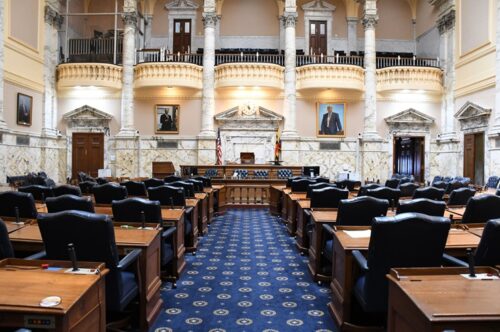1.15.25 – severnaparkvoice.com

The Maryland legislature’s annual 90-day session got underway on January 8. Each year, state senators and delegates discuss and review thousands of proposed bills. Here are four of the most important topics that will draw plenty of debate between now and April.
4. High Energy Costs
With Maryland shutting down coal power plants and seeking alternatives to fossil fuels, electricity costs are rising. Delegate Brian Chisholm wants Maryland to roll back the Climate Solutions Now Act (Senate Bill 528), which he said “created this mess.”
“Let the free market determine how to most efficiently, cost-effectively, and environmentally consciously increase supply and lower costs,” he said.
Senate President Bill Ferguson suggested that Maryland consider all wind, solar, geothermal, nuclear and natural gas options to find necessary relief from high utility costs.
3. Health Care
Among the many health care issues plaguing Marylanders, two are near the top of the list: the high cost of prescription drugs and the number of denied claims. Republicans have also discussed cutting Medicaid spending.
2. Blueprint For Maryland’s Future
Passed by the legislature in 2021, the landmark legislation is increasing education funding until it reaches a hefty $3.8 billion price tag each year. The 10-year plan is focused on the following pillars: early childhood education, high-quality and diverse teachers and leaders, college and career readiness, more resources for students to be successful, and governance and accountability.
Advocates expect the Blueprint for Maryland’s Future to transform the state’s education system into one of the best in the world, but some elements may have to be sacrificed or postponed to make the plan more affordable.
1. Budget Deficit
With costs outpacing revenue, Maryand is facing a $2.7 billion deficit for Fiscal Year 2026. According to Maryland Matters, Department of Legislative Services budget analyst David Romans made the following claim to legislative fiscal leaders. “By fiscal 2030 — the final year of our forecast — we are showing the state will only have enough revenue to cover 84% of the expenses we’re projecting the state to incur,” Romans said. “That is the largest gap that we have seen in the last 20 years. It is more significant than the Great Recession.”
Lawmakers will start by cutting current projects, but if that fails, tax increases are possible for the state’s high-income earners.
Governor Wes Moore has directed state agencies to partner with the Governor’s Office of Performance Improvement to find operational cost savings, streamline operations, and eliminate redundancies to better serve taxpayers.
